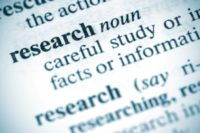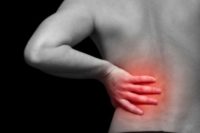NIOSH studies relationship between lifting and low back pain

Credit: Getty Images
In manufacturing and other industries where lifting is part of the job, disorders that affect the muscles and bones are a common problem. In fact, musculoskeletal disorders cause one-third of work-related injuries resulting in missed workdays, costing about $45 to $54 billion annually in lost productivity and treatment, according to estimates from the National Research Council and the Institute of Medicine.
At the National Institute for Occupational Safety and Health (NIOSH), scientists study the causes and prevention of these prevalent disorders, including low back pain. Unlike some exposures, however, exposures related to low back pain may be more difficult to measure. In a study published in the journal Safety and Health at Work, NIOSH scientists adapted risk assessment methods typically used in chemical risk assessment to assess workers’ accounts and the revised NIOSH Lifting Equation to identify specific factors related to low back pain among a group of manufacturing workers. This equation calculates a composite lifting index, which is the ratio of the load lifted to the recommended weight limit for multiple lifting tasks performed consecutively.
The study participants included 138 manufacturing workers. Most were male, their average age was 38 years, and all reported that they were free of low back pain at the beginning of the study. Follow-up was 1 year. Statistical analysis showed that workers in this study who reported more lifts per work shift were more likely to report instances of low back pain than other workers. Factors associated with fewer instances of self-reported low back pain in this study were non-work-related activities involving bending and twisting of the back, more overtime-work hours, and more years of overall employment. It is important to note that this study only identifies a relationship and does not prove that more lifts per work shift cause low back pain. Similarly, it does not prove that bending and twisting of the back and the other factors examined were unrelated to low back pain. Further development of these risk assessment methods and research is necessary to confirm the study’s results and their possible application to identifying the causes of other work-related musculoskeletal disorders.
More information is available:
- Non-chemical Risk Assessment for Lifting and Low Back Pain Based on Bayesian Threshold Models
- NIOSH Ergonomics and Musculoskeletal Disorders
- NIOSH Education and Information Division
Source: NIOSH
Looking for a reprint of this article?
From high-res PDFs to custom plaques, order your copy today!






